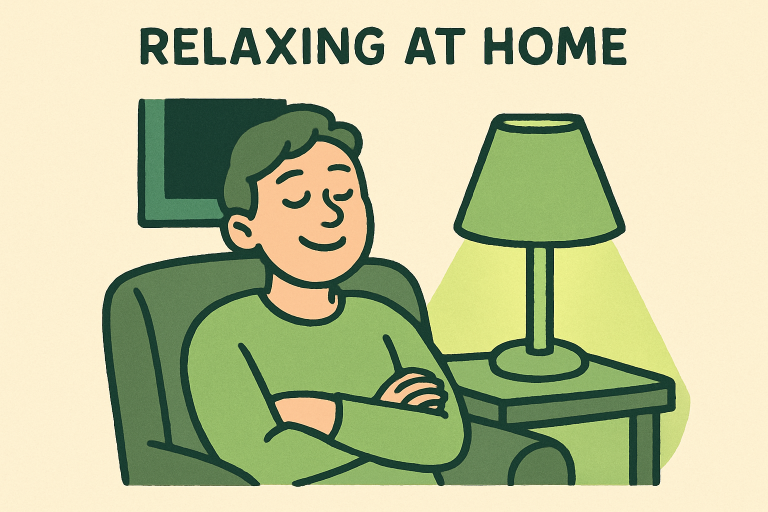Key Takeaways
- Alternative therapies offer safe and effective options for chronic pain without opioids, reducing the risk of dependency and severe side effects.
- Evidence supports the benefits of practices such as acupuncture, mindfulness-based interventions, and advanced biomedical devices for various types of pain.
- Always consult with healthcare professionals before starting any new treatment plan or changing existing therapies to ensure safety and optimal results.
Living with chronic pain can make even simple daily activities feel overwhelming, from getting out of bed in the morning to going for a walk or socializing with friends. The ongoing discomfort affects not only the body but also mental well-being, and can make traditional medication-centric treatments feel insufficient or unsustainable in the long term. As a result, the search for effective, non-opioid pain relief solutions is more critical now than ever. While conventional pain management still often revolves around prescription medications—including opioids and anti-inflammatory drugs—a growing number of people are now exploring alternative, integrative therapies that address pain from multiple angles. For those willing to go beyond standard approaches, working with a functional medicine doctor can help tailor a pain relief plan to each person’s unique needs, often resulting in better long-term outcomes and fewer side effects than relying on medication alone.
This shift toward alternative pain management is driven not only by patient demand but also increasingly supported by scientific research. As the opioid crisis has highlighted the dangers of dependency and overuse, medical professionals are turning to evidence-backed alternatives to provide safe, sustainable relief. New techniques and therapies continue to emerge, many of which offer non-opioid options with far fewer adverse effects. By broadening the scope of chronic pain relief to include integrative therapies, patients gain access to modalities that target both the physical and emotional aspects of pain, empowering them to take a more active role in their recovery. In this comprehensive look at non-opioid chronic pain management, we discuss some of the most promising alternative approaches available today.
Acupuncture: An Ancient Practice with Modern Validation
Originating thousands of years ago in ancient China, acupuncture is a therapeutic practice that involves inserting fine, sterile needles into specific points on the body, called meridians, which are believed to regulate the flow of energy, or “qi.” Over time, acupuncture has been adapted for modern use and has become one of the most well-known alternative treatments for pain. Numerous scientific studies now confirm acupuncture’s ability to relieve symptoms, particularly in chronic pain conditions such as sciatica, osteoarthritis, and lower back pain. For instance, a notable study summarized by Reuters demonstrated that patients who underwent regular acupuncture sessions reported significant reductions in pain, with relief lasting up to a year after treatment in some cases. While the precise mechanism is still being explored, research suggests that acupuncture may promote the body’s natural production of endorphins and other neurotransmitters, which can help modulate pain signals. Acupuncture’s blend of ancient tradition and growing scientific support makes it a valuable option, particularly for patients who want relief but are hesitant to rely solely on conventional medications or face their potential side effects.
Mindfulness-Based Interventions
Mindfulness practices—including meditation, deep breathing techniques, and yoga—have increasingly gained recognition for their ability to improve the way people cope with chronic pain. These practices encourage individuals to pay close attention to the present moment, fostering an awareness of pain sensations without judgment and thereby reducing the emotional distress often associated with chronic discomfort. Recent advancements, such as Mindfulness-Oriented Recovery Enhancement (MORE), further integrate mindfulness with cognitive-behavioral strategies, teaching patients to manage both the physical and psychological dimensions of pain. This combination has been shown to affect not only pain intensity, but also anxiety, depression, and overall quality of life. The benefits extend beyond basic pain relief—people who maintain regular mindfulness routines often report improved sleep, lower stress levels, and enhanced overall well-being. According to Wikipedia, results from randomized clinical trials continue to demonstrate the effectiveness of these approaches as powerful complements to traditional therapies, making them a valuable tool for those seeking holistic, long-term relief.
Virtual Reality: Immersive Pain Relief
Recent advancements in digital health technology are rapidly transforming the world of chronic pain management. Virtual reality (VR) therapy has emerged as a cutting-edge, interactive, and immersive solution to help reduce pain intensity and improve patient outcomes. VR works by allowing users to enter calming, controlled digital environments—such as beaches, forests, or tranquil gardens—that serve to distract and soothe the mind while disrupting the brain’s pain processing. A study conducted by the University of Exeter found that regular exposure to nature scenes via VR headsets could significantly diminish pain sensitivity. Interestingly, the effect sizes in these studies are comparable to those produced by some conventional pain medications, showing promise as a non-drug intervention. VR not only serves as a distraction but may also help retrain the brain’s response to pain by fostering neuroplasticity, leading to sustained improvements even after the session ends. The accessibility of VR therapy, particularly with home-based systems, suggests a promising future for patients seeking innovative self-management tools.
Green Light Therapy
Green light therapy is a promising, non-invasive method that uses specific wavelengths of green light to relieve pain for those with chronic conditions, especially individuals experiencing migraines and fibromyalgia. Studies indicate that spending time daily exposed to green LED light can decrease the frequency, severity, and length of headache episodes. This simple-to-use technique can be performed at home with minimal equipment and has few recorded side effects, making it attractive to people who do not respond well to medications or who want to reduce their medication intake. Unlike drugs, which may cause gastrointestinal or cognitive issues, green light is typically well-tolerated and might be particularly beneficial as part of a comprehensive pain management strategy. As research progresses, green light therapy is rapidly becoming an accessible, natural, drug-free option for managing chronic pain.
Transcutaneous Electrical Nerve Stimulation (TENS)
TENS therapy utilizes a portable, battery-operated device to send mild electrical pulses through electrodes placed on the skin. These gentle signals are thought to stimulate nearby nerves, helping obscure pain signals and preventing them from reaching the brain’s pain-processing centers. TENS units are compact, making them highly accessible for use at home, at work, or while traveling. Individual experiences with TENS therapy vary, but many patients find it particularly helpful for managing musculoskeletal pain, arthritis, and neuropathic pain that has not fully responded to medications. TENS treatments are considered very safe, with few side effects, provided the device is used correctly. Many people like the sense of empowerment that comes from controlling their own pain therapy, and TENS offers a valuable, easy-to-use option for those who want immediate relief on demand.
Neurostimulation Techniques
For individuals with severe pain that has not responded to less invasive treatments, advanced neurostimulation techniques offer hope and relief. Spinal cord stimulation (SCS) and peripheral nerve stimulation involve implanting specialized devices that deliver targeted electrical impulses directly to nerves or the spinal cord, effectively disrupting the transmission of pain signals before they reach the brain. These solutions can be customized for each patient and adjusted as needed over time. Research has shown these interventions provide lasting symptom relief for patients with hard-to-treat conditions such as diabetic neuropathy, failed back surgery syndrome, or complex regional pain syndrome. Patients who receive neurostimulation report notable improvements in pain relief, mobility, and overall quality of life, making this class of therapy a powerful tool for even the most challenging cases of chronic pain. Although these methods are more invasive than most alternatives, for some, they represent the best chance for functional restoration and proper relief.
Conclusion
The landscape of chronic pain management is rapidly evolving, as patients and providers embrace new hope through alternative and integrative therapies. From ancient practices like acupuncture to tech-forward options such as virtual reality and neurostimulation, today’s approaches offer comprehensive strategies that address pain at its roots—both physical and psychological. These therapies empower patients to explore options beyond opioids, decreasing risks while improving outcomes and quality of life. Everyone’s experience with pain is unique, so it is vital to work closely with healthcare professionals when designing a personalized management plan. With the proper support and a willingness to explore alternatives, people living with chronic pain can achieve genuine and lasting relief.

